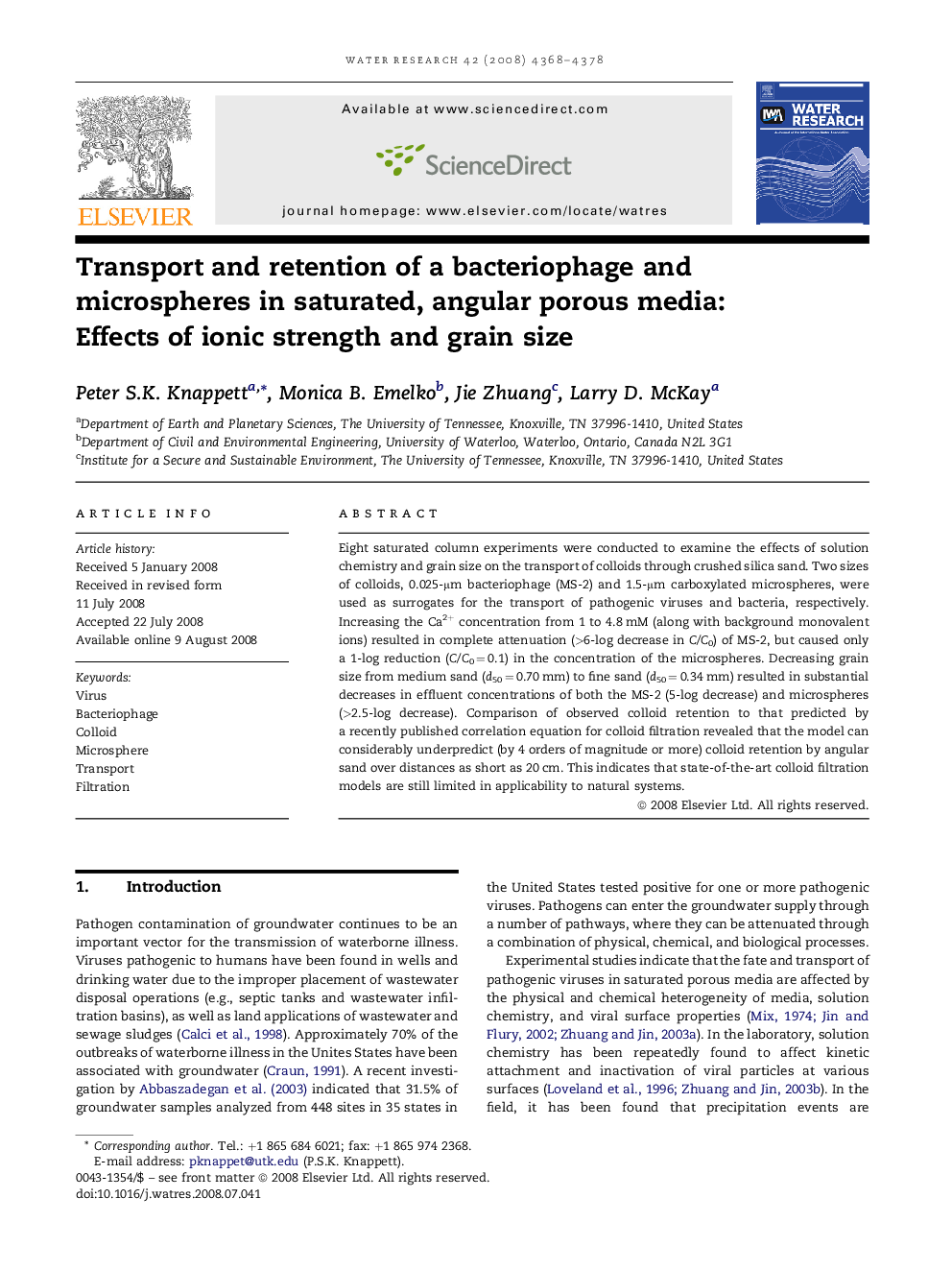| Article ID | Journal | Published Year | Pages | File Type |
|---|---|---|---|---|
| 4485806 | Water Research | 2008 | 11 Pages |
Eight saturated column experiments were conducted to examine the effects of solution chemistry and grain size on the transport of colloids through crushed silica sand. Two sizes of colloids, 0.025-μm bacteriophage (MS-2) and 1.5-μm carboxylated microspheres, were used as surrogates for the transport of pathogenic viruses and bacteria, respectively. Increasing the Ca2+ concentration from 1 to 4.8 mM (along with background monovalent ions) resulted in complete attenuation (>6-log decrease in C/C0) of MS-2, but caused only a 1-log reduction (C/C0 = 0.1) in the concentration of the microspheres. Decreasing grain size from medium sand (d50 = 0.70 mm) to fine sand (d50 = 0.34 mm) resulted in substantial decreases in effluent concentrations of both the MS-2 (5-log decrease) and microspheres (>2.5-log decrease). Comparison of observed colloid retention to that predicted by a recently published correlation equation for colloid filtration revealed that the model can considerably underpredict (by 4 orders of magnitude or more) colloid retention by angular sand over distances as short as 20 cm. This indicates that state-of-the-art colloid filtration models are still limited in applicability to natural systems.
